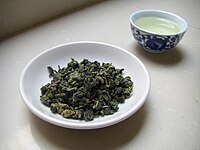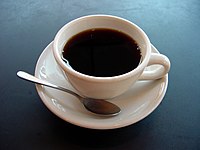Four Cardinal Beverages
The Four Beverages (Kan wi uch’ob) is the nickname given to a collection of the four most popular, non-alcoholic, drinks in the Mutul. All four of these beverages have dedicated rituals and tablewares, and a specific history tied to them. The popularity of each of these beverage individually may vary from region to region, but nation-wide Chocolate remain the most consumed drink of the Divine Kingdom, followed by Tea, Coffee, and then Mate. In the east and some parts of the south, Mate is more popular than tea or coffee while in some cities of the coastal north it’s coffee that is favored.
In modern times the four beverages can be found at the table of both nobles and commoners, despite some of them having be historically reserved to one social category or the other.
The Beverages
Chocolate : The oldest and most appreciated of the four, the Kakaw has been prepared as a drink for nearly all of its history. It was used during ceremonies but also during the daily life of those who could afford it. Most farmers grew chocolate in their backyards and used the cacao beans as a form of currency. But the most famed chocolates are produced and transformed by specialized agricultors and artisans who even today are employed by monasteries dedicated to the culture of cacao.
The Mutulese chocolate is surprising because it is still drank as a frothy, bitter, liquid. The roasted cacao seed paste is mixed with water, chile peppers, cornmeals, and other ingredients or colorants like vanilla, allspice, honey, earflower (“Muk’ ”) depending on the recipe, and then transferring the mixture repeatedly between pots until the top is covered with a thick foam.
The preparation of cacao start with cutting open cacao pods to expose the beans and the fleshy pulp. The beans are left out to ferment for a few days. In some cases, the beans are also roasted over an open fire in order to add a smoky flavor to it. The beans then have their husks removed and are ground into a paste. Sweeteners are rarely used in traditional chocolate drinks, instead the cacao paste is flavored with additives like flowers, vanilla pods, and chilies. Specific regions have specific additives they use, helping recognizing the origin of a chocolate. The vessel use to serve chocolate liquid are stubbier by nature to help froth the liquid better. The frothing of the chocolate is part of the ceremonial preparation and presentation of the drink, thus called “Chocolate Ceremony” in reference to the Ochranese “Tea ceremony” by ethnologists.
Tea : first imported from Ochran during the 16th century, is an aromatic beverage commonly prepared by pouring hot or boiling water over cured leaves of the Camellia sinensis species. After water and chocolate, it’s the most consumed drink in the Mutul. The Mutulese name for the beverage is Cha.
It’s from their contact with Tsurushima that Mutulese traders started to drink tea and imported it to the Mutul. But through the expansion of their trade empire in the Vespanian, they came into contact with many other form of teas, buying and selling them as very specific drinks, and creating whole records of different variants of tea. It’s only through spywork that the Mutuleses discovered the secret of the origin and of the preparation of tea, creating plantations in Benaajab and also in the Mutul proper with the help of farmer and craftsmen specialized in the tea industry engaged in Tsurshima and Kahei.
To this day, Tea remain popular, especially Tsurushimeses types like Sencha or Gyokuro. Tea produced in the Mutul is generally considered as local variants of these teas, and are drank in a very similar fashion.
Coffee : called Kawa in Mutulese, coffee was imported from Scipia around the same time as Tea was and through the efforts of the Mutulese Nuk Nahob, it became popular thourough the Divine Kingdom. The main sources of coffee were, and still are, Tulura and Pulau Keramat. Some regions of the Mutul well suited to the production of coffee, especially in the west, also started to grow the plant, but in quantities far inferior to the production of these two countries.
During recent times, coffee became more accessible to the wider population of the Mutul. It is generally consumed as a morning beverage, with little to no additive. Only in certain parts of the country is it consumed at other hour of the days. In the north, it has become famous as the drink of the gamblers and to this day coffee houses can be found close to stadiums and race circuits. it was also the drink of the smokers, as it was socially acceptable to smoke and drink coffee at the same time, even being the "normal" way of enjoying the beverage. Something that is unthinkable for chocolate or tea.
Mate : Called Yucha in the Mutul, it was first consumed in Sante Reze, the yerba mate before being exported to the Divine Kingdom during the 18th century after the installation of the Noble Republic. It became popular in the east of the country and other bordering regions, before spreading to other large cities.
The preparation of mate is a simple process, consisting of filling a container with yerba, pouring hot, but not boiling, water over the leaves, and drinking with a straw which acts as a filter so as to draw only the liquid and not the yerba leaves. The method of preparing the mate infusion varies considerably from region to region, and which method yields the finest outcome is debated. However, nearly all methods have some common elements. The beverage is traditionally prepared in a gourd recipient called the Kuia in Mutulese. Any additional herbs may be added for either health or flavor benefits.
Yucha is traditionally drunk in a particular social setting, such as family gatherings or with friends. With time, and like the Ochranese tea, a form of “Mate Ceremony” developed as a way to appreciate the preparation and, in that case, the degustation of the beverage. Even though, it’s does not have to be a social drink and it is perfectly normal to drink it alone.
The yerba mate, called Yu, is sold by herbalists specialized in its distribution, called Yuchoom. In regions where Mate is less popular, it is often distributed alongside other spices in marketplaces and other shops.



